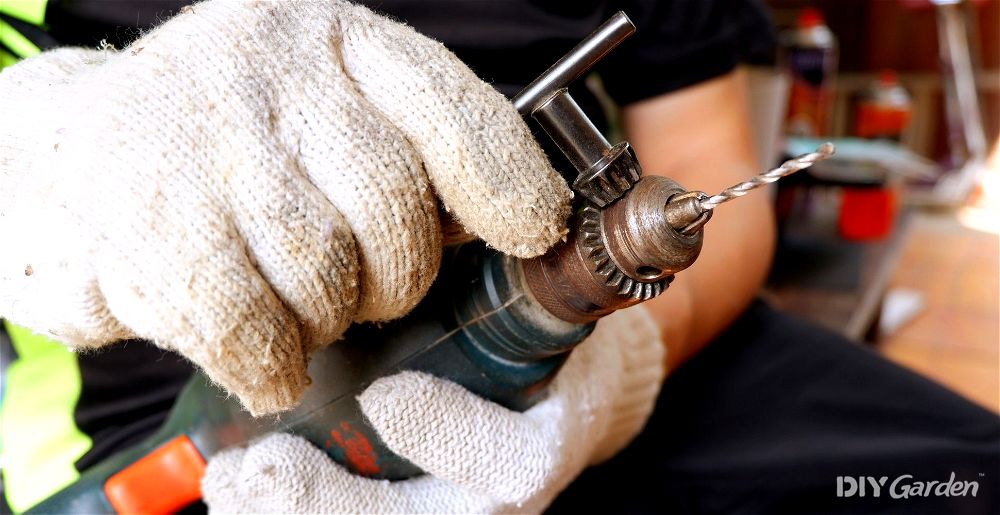
What is a Chuck?
The chuck is the mechanism at the top of the drill into which you clamp and secure your drill bits.
What are the Most Popular Chuck Sizes?
For most power drills the 2 most popular sized chucks are ⅜” and ½”. That means they can accept bits with shanks that have a maximum diameter of those 2 sizes.
Exceptions are Impact Drivers and Impact Wrenches with ¼” chucks and SDS Max Drills with ¾” chucks.
When comparing ⅜” to ½” chucks the depth into which a bit can be inserted into the chuck is less on a ⅜” chuck than a ½” one. So you may have to buy shorter bits if you select a ⅜” chuck.
How are Drill Bits Secured in the Chuck?
Most ⅜” and ½” chucks contain 3 jaws set at 120 degrees to each other to grip the bit. This odd number of jaws forces the bit to automatically self-centre when the jaws are tightened.
3 jaws are suitable for bits with round or hexagonal shanks. 4 jawed chucks are used in Impact Drivers and Impact Wrenches.
The jaws are closed by turning a collar or sleeve clockwise – threads on the inside of the collar and on the back of the jaws are engaged at an angle to grip a bit ever more tightly the further the collar is turned clockwise until it can be turned no more.
Turning the collar anti-clockwise reverses the process.
The more powerful Rotary Hammer (SDS Plus) and SDS Max drills have a different chuck mechanism.
SDS bits are grooved and just slot into the chuck without a need for tightening. Spring loaded ball bearings (SDS+) or wedges (SDS Max) then grip the bit.
SDS bits do not need to be gripped as tightly as conventional drill bits because the SDS’s piston mechanism that creates the percussion movement and the impact generated by the hammer action require a small amount of vertical play. Horizontal rigidity however is maintained by the slot and groove setup.
How Does a Keyed Chuck Work?
Keyed chucks require the chuck jaws to be tightened or loosened using a separate T-shaped toothed key whose nozzle is inserted into a hole in the collar and whose teeth engage with the collar’s teeth.
This provides the purchase and gearing necessary to turn the collar.
One of the most common complaints regarding keyed chucks is how often they get lost!
If you do happen to lose yours take care in selecting a replacement as keys come in many sizes – the diameter of the key, the depth of the nozzle and the spacing and size of the teeth are all important!
How Does a Keyless Chuck Work?
Keyless chucks are tightened or loosened by turning the collar directly by hand without the use of a key. Keyless chucks can have 1 or 2 collars. 1 collared types are more convenient and can be adjusted with one hand whilst 2 collared types require you to hold the lower collar with one hand whilst turning the upper collar with the other.
Some keyless chucks can also be ratcheting i.e. tightened to a maximum torque level and then no further – you’ll hear a click when this level is reached.
Advantages and Disadvantages of Keyless Chucks
In essence keyless chucks are popular because you never have to worry about misplacing the key but the downside is they cannot be tightened as much as a keyed chuck.
This can become a problem if you are using a keyless Hammer Drill or Hammer Drill Driver as the continuous impacts into masonry/ brick / concrete will eventually cause the bit to loosen and more often than not get stuck in the hole.
What are Chucks Made of?
Keyed chucks and keys tend to be made of metal. Many popular drills have keyless chucks made of plastic, whilst more higher powered drills tend to be found with metal chucks (keyed or keyless).
What if I Already Have a ⅜” Chuck but Want to Drill Holes Larger Than ⅜” Diameter?
For occasional use the cheapest and easiest solution is to purchase tapered or reduced-shank bits. There are many selections on the market including those with a 3/8″ shank and a ½” tip.
The chuck is relatively easy to detach so for more serious usage consider a replacement chuck of larger size (see below).
However if you now going to be consistently drilling larger holes than the drill itself was designed for you could burn out the motor, since drilling larger holes requires extra torque.
Replacing a Chuck
Chucks wear out over the years! If you want to replace the chuck as well as selecting the right diameter be sure to select the correct thread to which it attaches to the body of the drill.
The thread is denominated in UNC or UNF – the number of coarse or fine threads per inch. This value is commonly 20 or 24.
What Chuck Should I Choose?
In general for a drill under 18 Volts the combination of 3/8″, keyless and plastic is the most popular choice.
For a drill 18 Volts and above you should go for a ½” version.
Keyed or keyless is a personal preference but consider the point above regarding hammer drilling.
